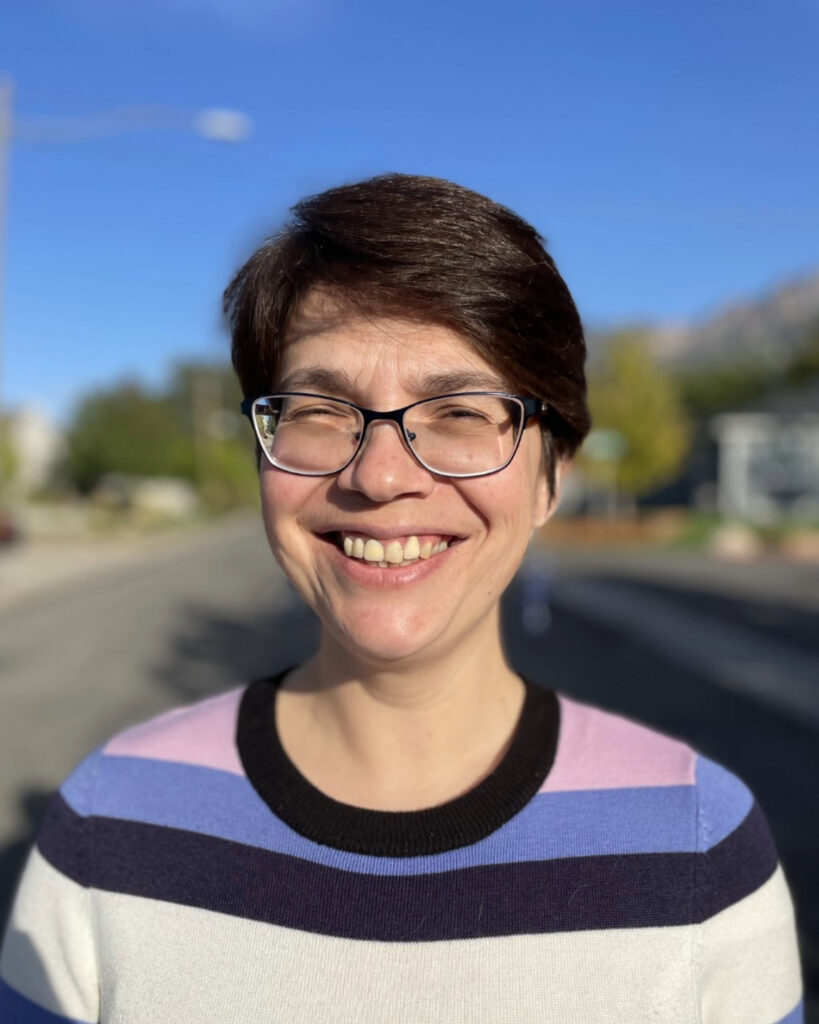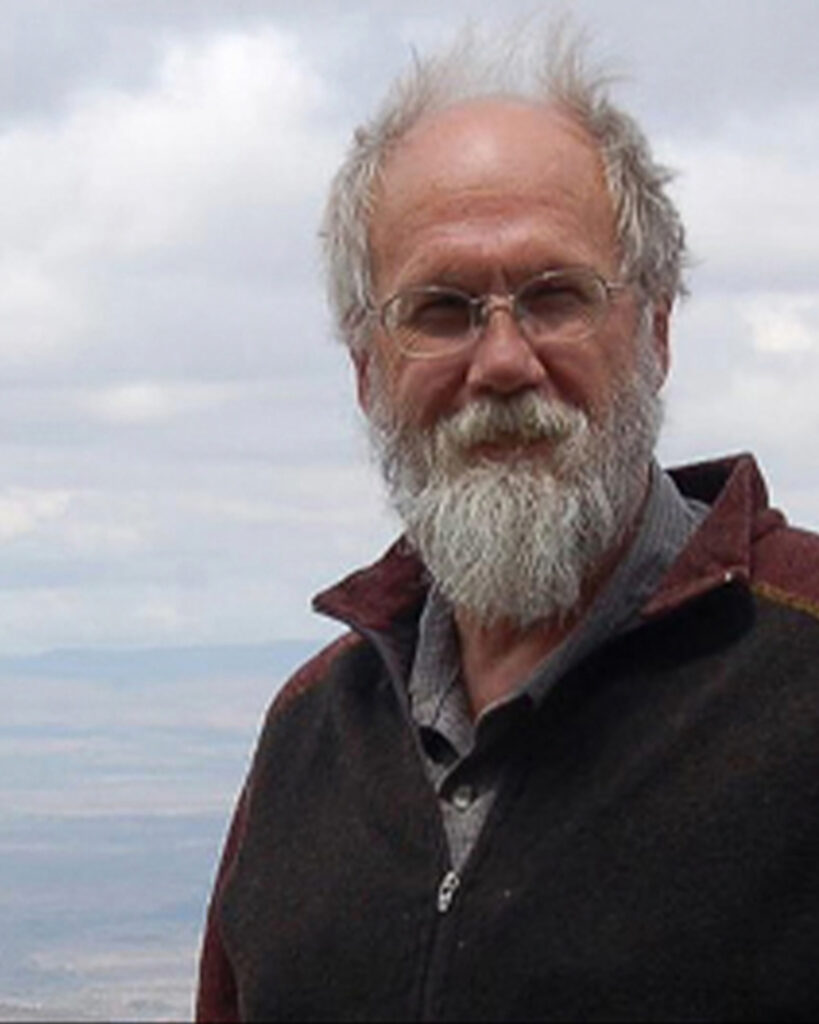Computational Math Meets National Momentum
May 22, 2025
As the National Science Foundation marked its 75th anniversary, a national meeting on computational mathematics held at the University of Utah offered a glimpse into the next 75 years of discovery.

Yekaterina Epshteyn
Hosted on campus the same week NSF celebrated its legacy of research leadership, the CompMath meeting brought together nearly 250 researchers from across the country. Through advances in modeling, algorithms, and high-performance computing, the gathering highlighted how universities like the U remain essential to building the future of science — one breakthrough at a time.
Solving Complex Problems at Scale
Organized by the U’s Yekaterina Epshteyn, James Adler (Tufts University), Alexander Alekseenko (CSUN) and Lars Ruthotto (Emory University), the meeting featured diverse presentations — everything from the design of robust algorithms for various solutions of mathematical models to computational mathematics advances of data science and artificial intelligence (AI).
Presenters discussed, among many other topics like quantum computing, the development of digital twins, virtual, dynamic models of physical systems that are constantly updated with real-time data. These models are used for prediction, monitoring and control of the physical system, offering significant advantages in various applications working toward the solutions of pressing scientific, engineering and societal problems.
Why Computational Mathematics Matters
Computational mathematics is foundational to nearly every field of modern research. By combining mathematical insight with algorithms and high-performance computing, it transforms raw theory into action—solving problems that are too massive, too complex, or too fast-moving for humans to tackle alone.
Some of those algorithms are being developed to improve medical device design like vascular stents, drug delivery devices, implanted devices and medical diagnostic equipment for cancer detection.
Other areas of inquiry include optimizing tracking devices of the contaminants in hydrological systems and creating data-driven methods and tools to detect faults in structures such as bridges and nuclear plants.
“As one of the organizers of the meeting,” says Epshteyn, “I was really impressed by how diverse the topics were, and how detailed the presenters were, from the U and across the nation, in explaining their research.”
National Relevance, Shared Purpose

The National Science Foundation is an independent agency of the U.S. federal government that supports fundamental research and education in all the non-medical fields of science and engineering.
Supported by the National Science Foundation, gatherings like this reflect more than academic collaboration — they demonstrate the kind of foundational work needed to address complex challenges at scale. As highlighted in the ASPI Two-Decade Critical Technology Tracker, accelerating progress in areas like AI, modeling, and quantum computing is essential to sustaining long-term scientific, technological, and societal advancement.
The rich tapestry of research in the computational mathematics space, on display at the U conference, demonstrated the real potential for making our world more efficient, safer, kinder and more livable all while growing the economy. “Making the connection between high-level research with real-life, day-to-day outcomes can elude all of us at times,” Epshteyn acknowledges. Not so at the NSF’s CompMath meeting. During the conference, it became self-evident that we are on the cusp of innovations in many closely connected areas, such as engineering and the deployment of next generation materials to design, for example, robust techniques for cryo-electron microscopy. “It’s exciting to see how research in applied and computational mathematics leads to all of these advancements,” says Epshteyn.
Mentoring Future Workforce
The conference also fielded several engaging panel discussions which provided beneficial mentoring to early-career participants — the students, post-doctoral researchers and junior researchers who make up the newest crop of skilled scientists and engineers.
In all, the NSF CompMath Meeting 2025 brilliantly showcased the state-of-the art developments in research and education in the computational mathematics field. It created a supportive and engaging atmosphere for new interactions and collaborations among participants while fostering a greater sense of community for computational mathematicians.
“It was not only a wonderful and productive event for those who attended,” concludes Epshteyn of the event. “It was a gratifying accomplishment for all the work supported by the NSF Division of Mathematical Sciences Computational Mathematics program, for the university and for the future of Utah.”
by David Pace
To read more about the conference and view additional photos click here.







 Over the course of an academic career spanning five decades, the University of Utah geoscientist has developed numerous forensic tools, such as isotope analysis, for understanding geological processes that affected the course of life on Earth, according to presentations given Saturday at a symposium to reflect on the contributions of Cerling, who is retiring this year.
Over the course of an academic career spanning five decades, the University of Utah geoscientist has developed numerous forensic tools, such as isotope analysis, for understanding geological processes that affected the course of life on Earth, according to presentations given Saturday at a symposium to reflect on the contributions of Cerling, who is retiring this year.

 Metallurgy and Exploration Engineers' annual conference in February. In particular they’ve been lauded for their stellar communication and teamwork, their ability to seamlessly act and react together in high stress situations.
Metallurgy and Exploration Engineers' annual conference in February. In particular they’ve been lauded for their stellar communication and teamwork, their ability to seamlessly act and react together in high stress situations.  “I’d decided I wanted to know more about what comes after the process of my future career,” she says, further explaining that “I didn’t know what to expect at first, but I’ve really come to appreciate the industry and the culture around safety. It’s not just mine rescue — staying mindful and staying safe is important for everyone.”
“I’d decided I wanted to know more about what comes after the process of my future career,” she says, further explaining that “I didn’t know what to expect at first, but I’ve really come to appreciate the industry and the culture around safety. It’s not just mine rescue — staying mindful and staying safe is important for everyone.”
